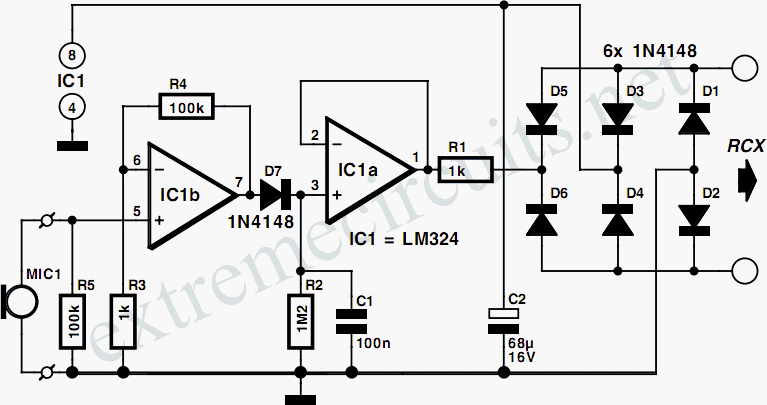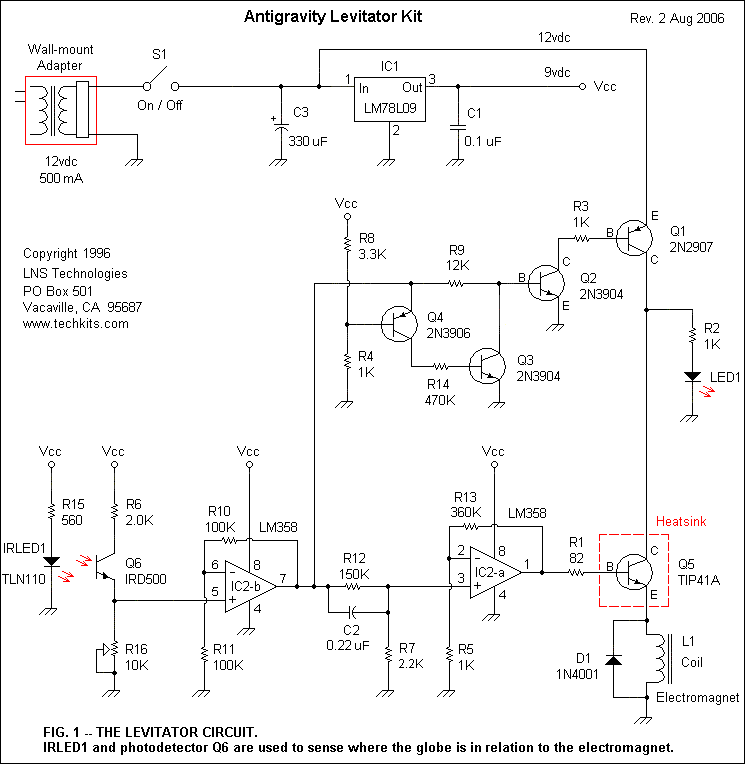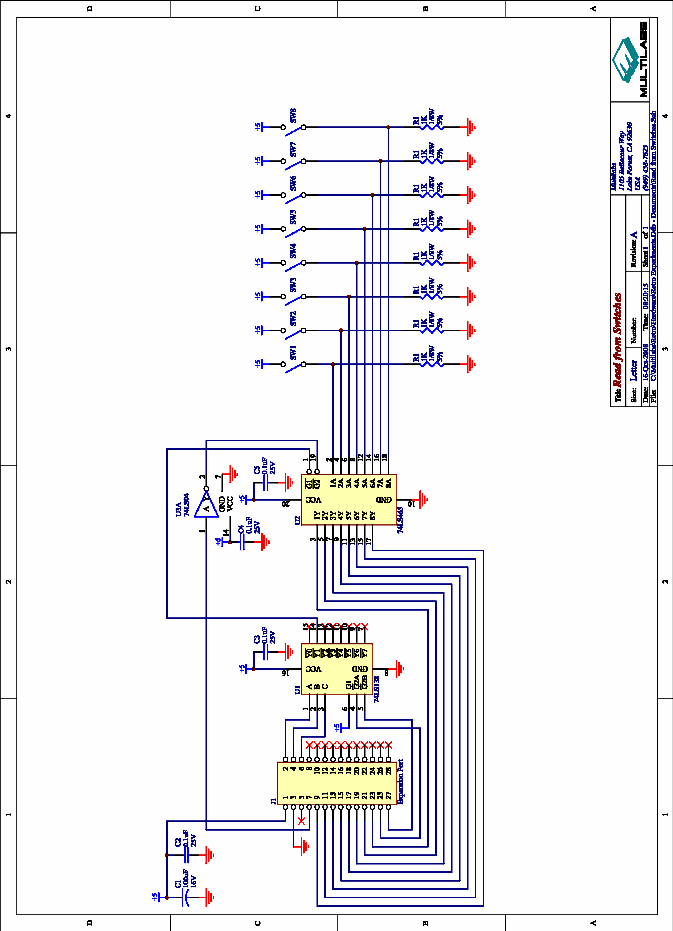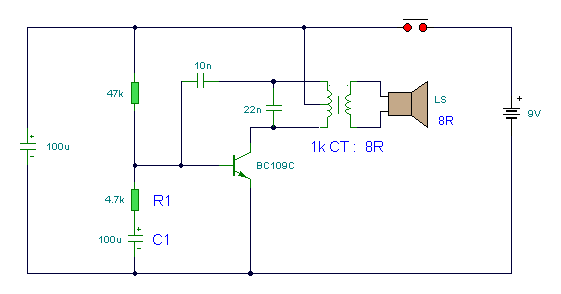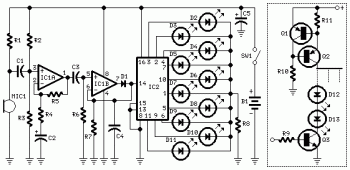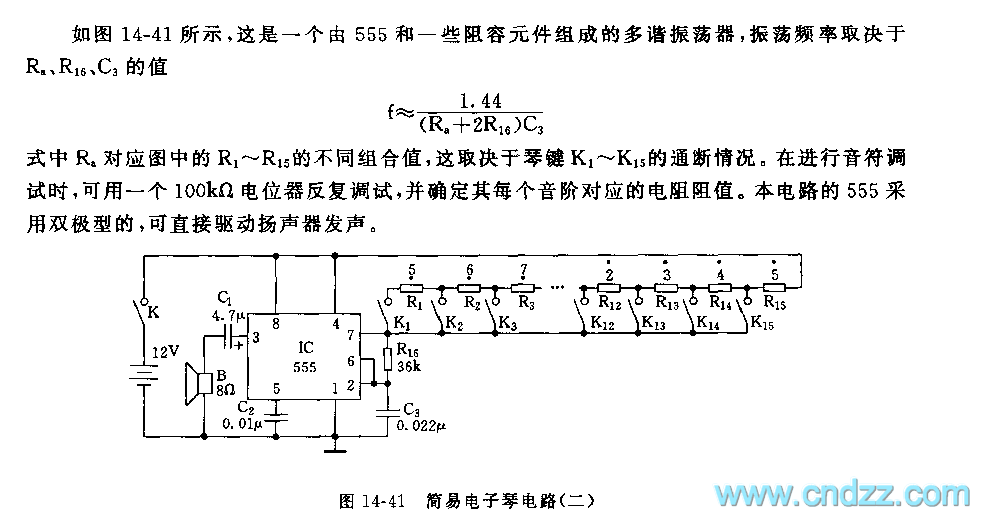
Electronic Cricket Match Game

This electronic cricket is a gift for children. This simple battery-powered circuit can be utilized to play cricket matches with friends. Each LED in the circuit...
This electronic cricket circuit is designed as an engaging and interactive toy for children, promoting both play and learning. The primary function of this device is to simulate the experience of playing cricket, allowing children to enjoy the game in a simplified, electronic format. The circuit operates on a battery, making it portable and convenient for outdoor play or indoor use.
At the core of the circuit are several key components that facilitate its operation. The circuit typically includes a microcontroller, which serves as the brain of the device, controlling the various functions and responses of the electronic cricket. The microcontroller is programmed to manage the timing of the game, the activation of LEDs, and the sound effects that enhance the play experience.
LEDs are strategically placed within the circuit to represent different aspects of the cricket game, such as players, the ball, and the boundary. These LEDs light up in specific patterns to indicate various game states, such as when a player is batting, bowling, or when a run is scored. The visual feedback provided by the LEDs is crucial for maintaining engagement and excitement during gameplay.
Powering the circuit is a simple battery setup, which may consist of AA or AAA batteries, or a rechargeable lithium-ion battery pack, depending on the design. The use of a battery-powered system ensures that the cricket circuit is easy to use without the need for external power sources, making it ideal for outdoor activities.
In addition to the basic components, the circuit may also include a speaker or buzzer to produce sound effects, further immersing the players in the game. The combination of visual and auditory feedback creates a more dynamic and enjoyable experience for children.
Overall, this electronic cricket circuit is not only a fun toy but also serves as an educational tool, introducing children to basic electronic concepts and the principles of game design. The simplicity of the circuit makes it suitable for DIY projects, allowing children and parents to build and customize their own electronic games.This electronic cricket is a present for Kids. This simple battery powered circuit can be used to play Cricket Match with your friends. Each LED in the cir.. 🔗 External reference
This electronic cricket circuit is designed as an engaging and interactive toy for children, promoting both play and learning. The primary function of this device is to simulate the experience of playing cricket, allowing children to enjoy the game in a simplified, electronic format. The circuit operates on a battery, making it portable and convenient for outdoor play or indoor use.
At the core of the circuit are several key components that facilitate its operation. The circuit typically includes a microcontroller, which serves as the brain of the device, controlling the various functions and responses of the electronic cricket. The microcontroller is programmed to manage the timing of the game, the activation of LEDs, and the sound effects that enhance the play experience.
LEDs are strategically placed within the circuit to represent different aspects of the cricket game, such as players, the ball, and the boundary. These LEDs light up in specific patterns to indicate various game states, such as when a player is batting, bowling, or when a run is scored. The visual feedback provided by the LEDs is crucial for maintaining engagement and excitement during gameplay.
Powering the circuit is a simple battery setup, which may consist of AA or AAA batteries, or a rechargeable lithium-ion battery pack, depending on the design. The use of a battery-powered system ensures that the cricket circuit is easy to use without the need for external power sources, making it ideal for outdoor activities.
In addition to the basic components, the circuit may also include a speaker or buzzer to produce sound effects, further immersing the players in the game. The combination of visual and auditory feedback creates a more dynamic and enjoyable experience for children.
Overall, this electronic cricket circuit is not only a fun toy but also serves as an educational tool, introducing children to basic electronic concepts and the principles of game design. The simplicity of the circuit makes it suitable for DIY projects, allowing children and parents to build and customize their own electronic games.This electronic cricket is a present for Kids. This simple battery powered circuit can be used to play Cricket Match with your friends. Each LED in the cir.. 🔗 External reference
